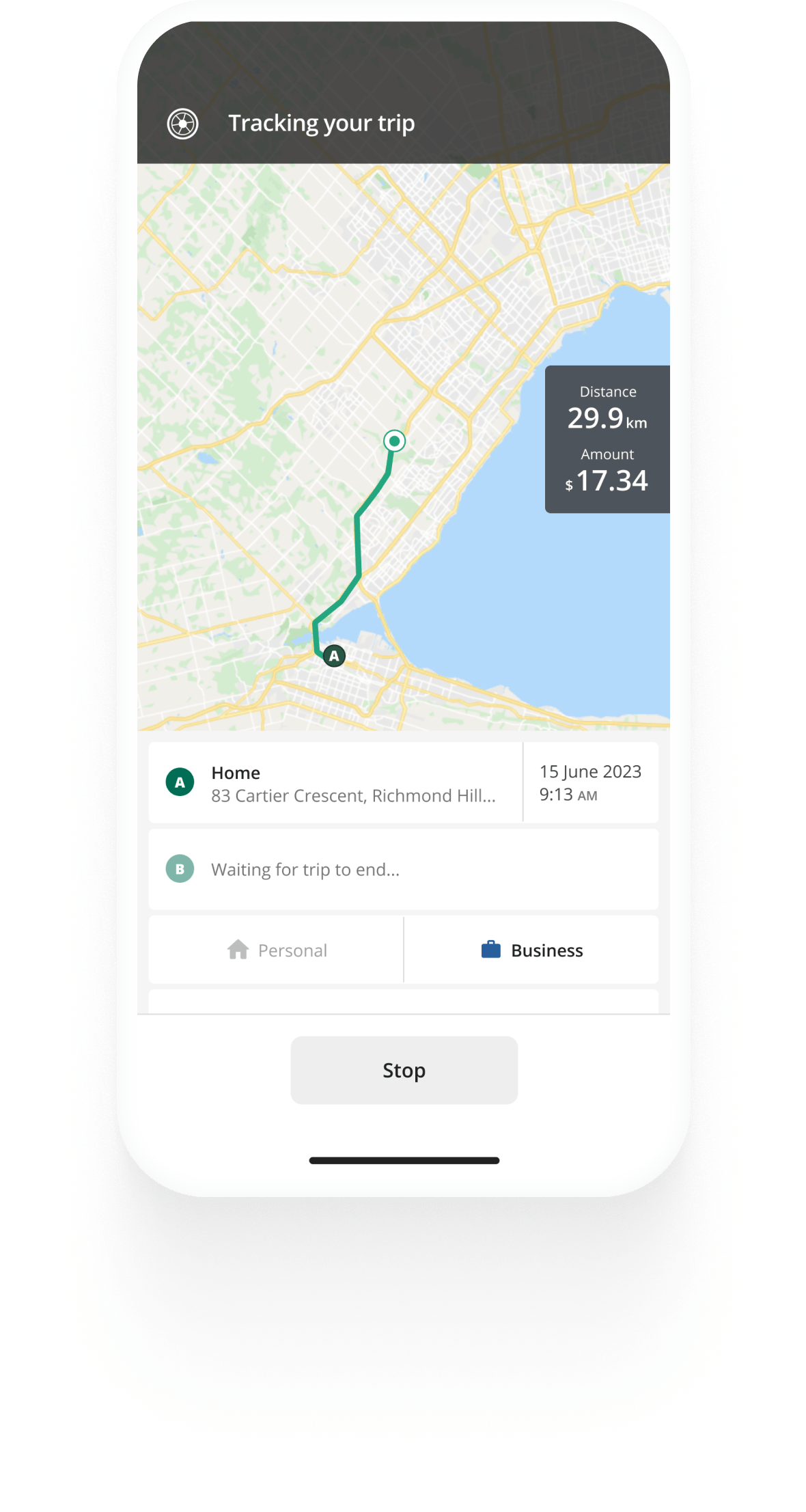Track mileage automatically
Get startedCurrent Mileage Rates In Canada
The Canada Revenue Agency has announced the new 2025 mileage rates:
- 72 cents per km for the first 5000 km driven, up two cents from last year's rate
- 66 cents per km after that
An additional 4 cents per business kilometre for the Northwest Territories, Yukon, and Nunavut.
Log your business travel and calculate your reimbursements automatically. Driversnote is always up to date on laws and the CRA mileage rates. Sign up for Driversnote.
The mileage rate in Canada for 2024 was:
- 70 cents per km for the first 5000 km driven
- 64 cents per km after that
An extra 4 cents per kilometre in the Northwest Territories, Yukon, and Nunavut.
See previous years' per kilometre rates for business-related driving.
Alternatives to the mileage rate in Canada
An employer can choose to pay out mileage reimbursement by the mileage rate set by the CRA or reimburse specific expenses for employees’ business-related driving.
As a self-employed individual or a business owner, you deduct the costs of operating your vehicle for business by the logbook method. Read more about how to calculate your mileage deductions if you are self-employed.


Track business driving with ease
Trusted by millions of drivers
Automate your logbook Automate your logbook

Automatic mileage tracking and CRA-compliant reporting.
Get started for free Get started for freeThe current rate for mileage in Canada
The current rate for mileage in Canada is 72¢ per kilometre for the first 5,000 kilometres driven. After 5000 km, the rate drops to 66¢ per kilometre for business purposes.
Usually, when people talk about the CRA mileage rate or the cents per kilometre rate, they mean the one used for business - that is when you drive your personal vehicle for business purposes and are reimbursed the costs. The CRA sets the standard automobile allowance rate each year, though your employer may offer a different rate.
As an employee, your employer can choose the rate that they reimburse mileage costs at. It’s up to your employer to set their rate and rules for reimbursement, but the CRA’s automobile allowance rate is the standard. If you're paid a higher or lower per kilometre rate than the CRA’s standard rate, those payments may be considered taxable income.
How to track and record mileage
There are many options, but mileage tracking apps are your go-to. By using your phone's GPS, you can easily track and log all your trips. They also store your information and generally allow you to classify each trip as personal or business, as per the rules set down by the CRA. We've got you covered with a simple and user-friendly app whether you use Android or iOS.
Other alternatives are keeping a physical logbook or using a spreadsheet. Whatever you choose, be sure to understand what information you need to record for your employer or the CRA. The biggest advantage when using a logbook app in comparison to a spreadsheet is that it may take you a lot less time to log trips and there is no chance of you losing your data (as you could lose a notebook).
FAQ

Tired of logging mileage by hand?
Effortless. CRA-compliant. Liberating.
CRA Mileage Guide
- For Self-Employed
- For Employees
- For Employers
- Mileage Log Requirements
- How To Calculate Mileage Reimbursement
- Is Car Allowance Taxable?
- Claim Motor Vehicle Expenses In 5 Steps
- Current and Historic CRA Mileage Rates
- Historic Mileage Allowance Rates
- Current CRA Mileage Rates